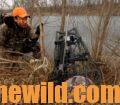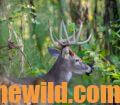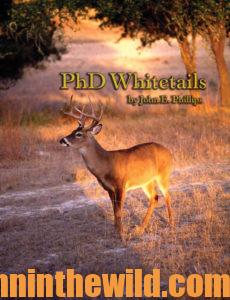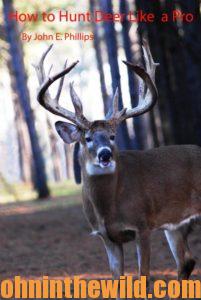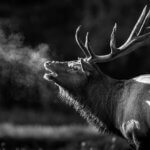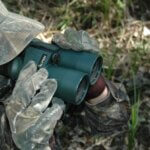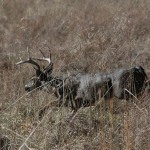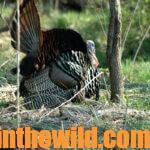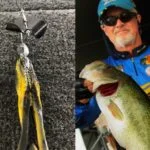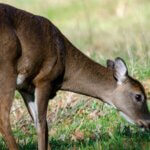Editor’s Note: Hunters can use much of the equipment they have at their homes already to make hunting deer easier on their lands, including leaf blowers, shovels, backpacks, trail cameras, rakes, ATVs and flagging tape to name some. They also need to understand how to find and take big deer on small lands near their homes.
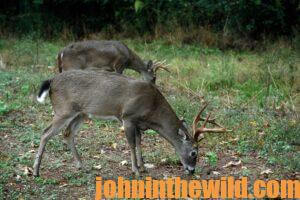 “You can plant a green field hidey-hole 2 weeks before bow season and still have a great place to deer hunt,” says Dr. Grant Woods, a nationally-known wildlife biologist and researcher from Reedsville, Missouri. I listened carefully to Woods’ ideas, because although I wished I had several thousand acres with 10-20 food plots I could hunt, I don’t. I hunt with friends, on public lands or on hunting clubs that already have food plots established. But you can create your own hidey-hole hunting spots even in those places.
“You can plant a green field hidey-hole 2 weeks before bow season and still have a great place to deer hunt,” says Dr. Grant Woods, a nationally-known wildlife biologist and researcher from Reedsville, Missouri. I listened carefully to Woods’ ideas, because although I wished I had several thousand acres with 10-20 food plots I could hunt, I don’t. I hunt with friends, on public lands or on hunting clubs that already have food plots established. But you can create your own hidey-hole hunting spots even in those places.
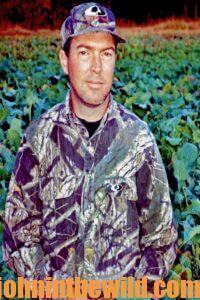
Places Woods Suggests You Consider Planting – To identify land where sunlight hits the ground, use an aerial photo to look for meadows, swampy places, pine plantations and ridges. For more success, learn everything you can about the region you want to turn into a last-minute hot spot, and do a soil test. Make sure you plant these hidey-holes, so that the wind won’t blow your human odor to the deer as you approach your stand site. Pick out tree stand sites where you’ll want to set-up. Never create hidey-holes without giving thought as to how to hunt these mini-food lots, what winds you’ll encounter, where you can hang tree stands, and where the closest thick-cover area’s located to where you want to plant.
You can pinpoint:
- a small clearing close to a picnic area in a national forest, some type of pavilion or other type of recreation site that attracts numbers of people. Naturally, people will assume deer will avoid places with groups of humans. If you understand that deer pattern people just like people pattern deer, you easily can understand that big bucks may bed down close to human activity.
- small clearings near gates, major roads or any place else where you feel confident no hunter will hunt, even if he spots a green field there.
- small, flat shelves or benches on the sides of ridges, perhaps only 10-20-yards wide.
- a young pine plantation. You’ll spot skips – inside places where the pine trees haven’t grown, which have formed small openings in the pines. Perhaps pine beetles have gotten into that section, or maybe there’s a ditch, a creek or a gully that provides an opening in the pines. Mark these locations with a hand-held GPS.
- a large cane thicket that’s too dense through which to walk. Go out in the middle of the thicket, cut the canes down, and clear-out a spot big enough to plant. Don’t leave any type of trail into or out of the thicket that someone else can find. You also can plant inside a blackberry or a gall berry thicket.
- an old logging yard with some logs still stacked-up. Although this area may have brush and undergrowth, the site gets sun because it’s a small clearing.
- an area where a large tree has fallen and made an opening, the middle of a sage field where you can create an opening and/or an abandoned trail.
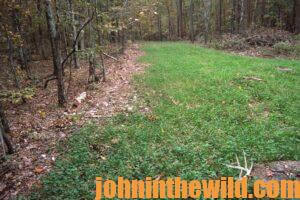
You simply need a small clearing that receives sunlight throughout much of the day. If the clearing has leaves on it, use a backpack blower or a rake to clear the leaves away, go in, and scatter seed blends designed to produce a food plot within several weeks and fertilizer.
A Way to Create Hidey-Holes – Woods likes to plant these small patches of green forage where a deer can get several mouths full of food before the animal moves on to a major green field or an agricultural crop. To create a patch, Woods uses a backpack leaf blower or a rake to clear the litter off the forest floor or an ATV with a small plow or a disc. “Using my leaf blower, I’ll blow out a spot, about 20×20 feet, where I find sunlight hitting the forest floor,” Woods reports. “I’ll take 10-10-10 fertilizer and sow it over the cleared-out spot. 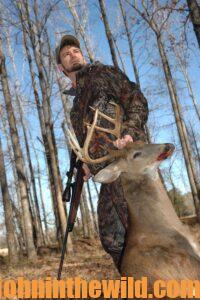 Next, I’ll sow winter wheat, buckwheat, peas or any seeds that will germinate on top of the soil and produce a crop quickly after the first rain.”
Next, I’ll sow winter wheat, buckwheat, peas or any seeds that will germinate on top of the soil and produce a crop quickly after the first rain.”
Including the fertilizer and the seed, you’ll probably have less than $50 and 45 minutes of sweat equity invested in each hidey-hole you create. Plant your tiny green spots where hunters won’t find them. You can make one of these small food plots every time you go into the woods to scout before the season or once deer season starts and continue to create them up until 2 weeks before the first frost.
John E. Phillips’ latest deer book “How to Hunt Deer Like a Pro: Volume II,” just was published on Amazon in print at https://www.amazon.com/gp/product/B0BGSP3QPB/ref=dbs_a_def_rwt_hsch_vapi_tpbk_p4_i4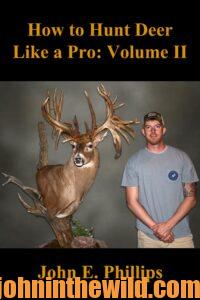
The Audible version should be available by mid-November. Since deer hunting and deer hunters are drastically changing each year, John interviewed some top deer hunters like Mark Drury, Dr. Larry Marchinton, Dr. Bob Sheppard, Pat Reeve, Gene Wensel, Cody Robbins, Ernie Calandrelli, Brian Murphy and Luke Brewster, who took the world’s largest whitetail, to learn their up-to-date techniques for successfully hunting deer and having more places to hunt. Also, John’s first book in that series “How to Hunt Deer Like a Pro” at http://amzn.to/YpoQHA for Kindle, print and Audible, includes other outstanding deer hunters. Also, check out John’s book, “PhD Whitetails: How to Hunt and Take the Smartest Deer on Any Property,” available in Kindle at https://www.amazon.com/gp/product/B007A2N792/ref=dbs_a_def_rwt_hsch_vapi_taft_p1_i8 and in print and in Audible at https://www.amazon.com/gp/product/1979793387/ref=dbs_a_def_rwt_hsch_vapi_taft_p7_i5.
You may have to copy and paste these links into your browser. When you click on the books, notice on the left where Amazon says you can read and hear 10% of these books for free. On the right side of the page for each Audible book and below the offer for a free Audible trial, you can click on Buy the Audible book.
Tomorrow: Build Deer Trails Through Thick Cover

